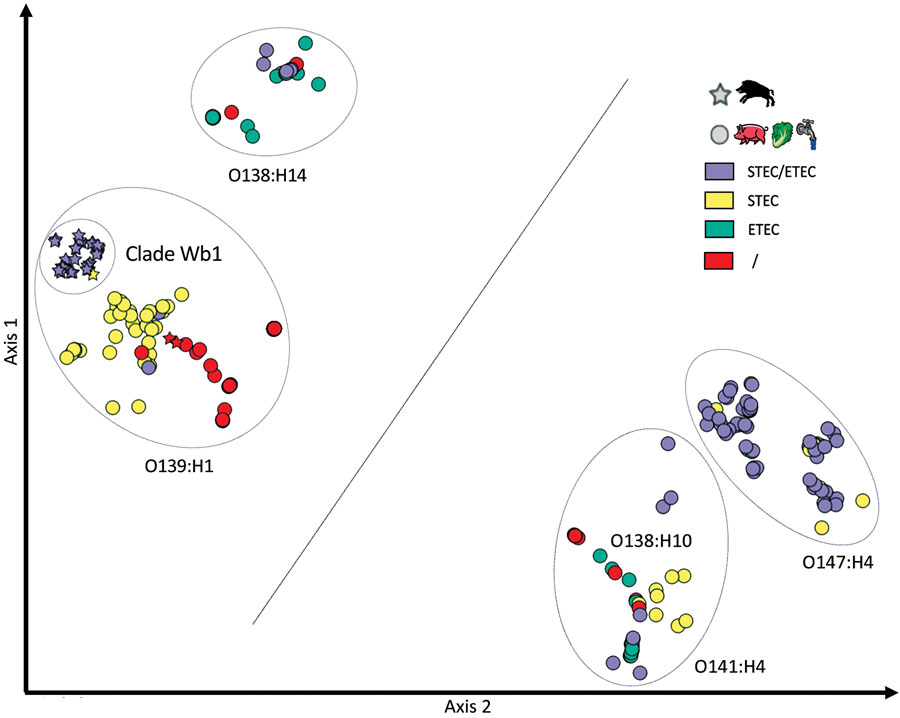Wild Boars as Reservoir of Highly Virulent Clone of Hybrid Shiga Toxigenic and Enterotoxigenic Escherichia coli Responsible for Edema Disease, France
Alexandre Perrat, Priscilla Branchu, Anouk Decors, Silvia Turci, Marie-Hélène Bayon-Auboyer, Geoffrey Petit, Vladimir Grosbois, Hubert Brugère, Frédéric Auvray

, and Eric Oswald

Author affiliations: Institut de Recherche en Santé Digestive, Université de Toulouse, Institut National de la Santé et de la Recherche Médicale, Institut National de Recherche pour l’Agriculture, l’Alimentation et l’Environnement (INRAE), Ecole Nationale Vétérinaire de Toulouse, Université Paul Sabatier, Toulouse, France (A. Perrat, P. Branchu, H. Brugère, F. Auvray, E. Oswald); Office Français de la Biodiversité, Orléans, France (A. Decors); Labocea, Ploufragan, France (S. Turci, M.-H. Bayon-Auboyer); Université Clermont Auvergne INRAE, VetAgro Sup, Unité Mixte de Recherche (UMR) Epidémiologie des Maladies Animales et Zoonotiques, Saint-Genès-Champanelle, France (G. Petit); UMR Animal-Santé-Territoires-Risques-Ecosystèmes, Centre de Coopération Internationale en Recherche Agronomique pour le Développement, INRAE, Montpellier, France (G. Petit, V. Grosbois); Centre Hospitalier Universitaire de Toulouse, Hôpital Purpan, Toulouse (E. Oswald)
Main Article
Figure 6

Figure 6. Comparison of the accessory genome composition of wild boar Escherichia coli O139:H1 strains in France with that of E. coli O139:H1, O141:H4, O147:H4, and O138:H14 of worldwide origin. Each sign represents a strain depending on its origin (star, wild boar; circle, other hosts). The distance between the signs in a 2-dimensional space increases with the decrease in orthologous genes in common between strains represented. The signs are color coded depending on the predicted pathotype. The 28 wild boar O139:H1 strains are represented by gray stars except for 1 strain lacking sta1/stb genes, represented by a yellow star. Two additional wild boar O139:H1 strains were included in this analysis and are represented by red stars because they lacked the stx2e and sta1/stb genes (Appendix 1 Table 3); they did not belong to clade WB1 (data not shown). ETEC, enterotoxigenic Escherichia coli; STEC, Shiga toxin–producing Escherichia coli; /, neither STEC nor ETEC nor hybrid STEC–ETEC.
Main Article
Page created: December 01, 2021
Page updated: January 27, 2022
Page reviewed: January 27, 2022
The conclusions, findings, and opinions expressed by authors contributing to this journal do not necessarily reflect the official position of the U.S. Department of Health and Human Services, the Public Health Service, the Centers for Disease Control and Prevention, or the authors' affiliated institutions. Use of trade names is for identification only and does not imply endorsement by any of the groups named above.
